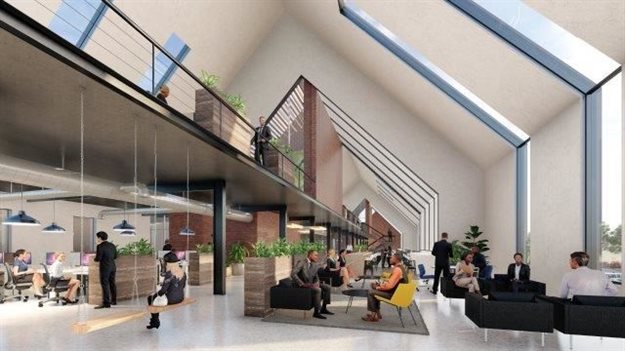The post-Covid-19 office of the future
The Covid-19 pandemic has highlighted a whole new dimension to worker and building health. With 80% of infectious diseases transmitted by touching contaminated surfaces, there is a heightened awareness of the communal services accessed during the course of a workday.

Estelle Meiring, director, Paragon Group
The first port of call for any company preparing their workplace should be the regulations laid down by the South African government, specifically the Covid-19 Occupational Health and Safety Measures in Workplaces (C19 OHS, 2020).
These regulations cover items such as density reduction, circulation, physical barriers, screening stations and functionality. Existing workspace should be evaluated to assess compliance and risk in relation to each of these elements. How densely staff are distributed in your office space will have a big influence on how costly the implementation measures will be.
Office layout
If, for example, your return-to-work density will be 18.5m² per person, you will probably be able to maintain safe distances between people by spacing them out throughout the office. If, however, your density will be 14.5m² per person, you might have to install physical barriers or screens between desks. This is, of course, all dependent on your company’s specific layout and how it operates, and needs to be reviewed on a case-to-case basis.
With telecommuting and flexible working here to stay, business owners might find that, although they have less employees at the office at any one time, they also need more space per employee. To a certain extent, I think we will be seeing a reversal of the last ten years’ trend of desk sizes reducing and densities increasing.
Less traditional workspaces
The emphasis of office space in the future will shift away from ‘a place to sit and work’ to ‘a place to communicate, collaborate and build company culture’. While the lockdown has shown us that we can work from anywhere, it has also emphasised, more than ever, that humans are social beings and need interaction with people to remain productive and positive. I see the office space of the future housing a lot less traditional workspaces and a lot more couches and social seating, even if these seats each have their own fold-open writing desks.
Issues raised by the office space of the future include: Can physical contact to shared surfaces be reduced, or even avoided altogether, by implementing things like censor taps, automated doors and cell phone-controlled lifts? Where contact is unavoidable, should we rethink the materials that these surfaces are made of, as well as their texture and durability? Certainly we are predicting that businesses will be incorporating a lot more stairs into their buildings to encourage people to use these for vertical circulation instead of cramped lifts.

Image supplied
Healthy, productive workers
Healthy buildings mean healthy workers, and healthy workers mean productive workers. With the move towards more environmentally conscious design over the last decade, we have already seen a progression towards healthier building environments. Tools used to rate building sustainability, such as South Africa’s Green Star Office tool, have put the spotlight on occupant health by awarding points to items such as a higher fresh-air exchange rate and building materials that do not emit unhealthy volatile organic compounds.
Generally, there is a feeling that people want to ‘own’ a portion of workspace and be in charge of its hygiene. Although that cannot necessarily translate back to a cellular office for every employee, it might mean, for example, that every employee owns their own personal desk surface, something that can be clipped in and out in a hot-desking environment and remain for exclusive use by one person.
Something else to consider is that employees need to feel safe and comfortable in their workplace. Even if you are complying with all government regulations, if your staff don’t feel relaxed and looked-after, they will be on edge and production and morale will suffer. Careful consideration therefore needs to be given to how changes are implemented and how they look and feel.

Image supplied
Taking a long-term view
We advise clients on what we believe makes the most sense from a long-term point of view for their asset. They will then take a view on the market and viability to make a final call. Although most of the buildings that we design are Green Star-rated, we believe that all buildings, whether rated or not, should follow good design principles when it comes to orientation, energy and water efficiency and occupant health and comfort.
Future growth areas for Paragon Group post the Covid-19 crisis are interior space planning and design, as companies need to adjust their workspaces to the new environment; repurposing: finding creative ways to alter existing buildings to perform new functions, such as office buildings into residential; distribution centres; new-generation office buildings that offer flexibility and create healthier, more hygienic spaces; and education.
Traditional retail has taken a huge knock, with e-commerce expected to increase its market share considerably over this time. This means the requirement for less shopping centre space and more distribution centre space. We are certainly in discussions with our clients to see how we can assist.
I believe that we will see a lot of repurposing of buildings over the next few years, and this is where we as designers can play a pivotal role. Of course, the property development sector is under strain in light of the current economic downturn and uncertainty in the market. We do believe, however, that new circumstances bring new opportunities for those who are willing to adjust and adapt creatively.
About the author
Estelle Meiring, director, Paragon Group